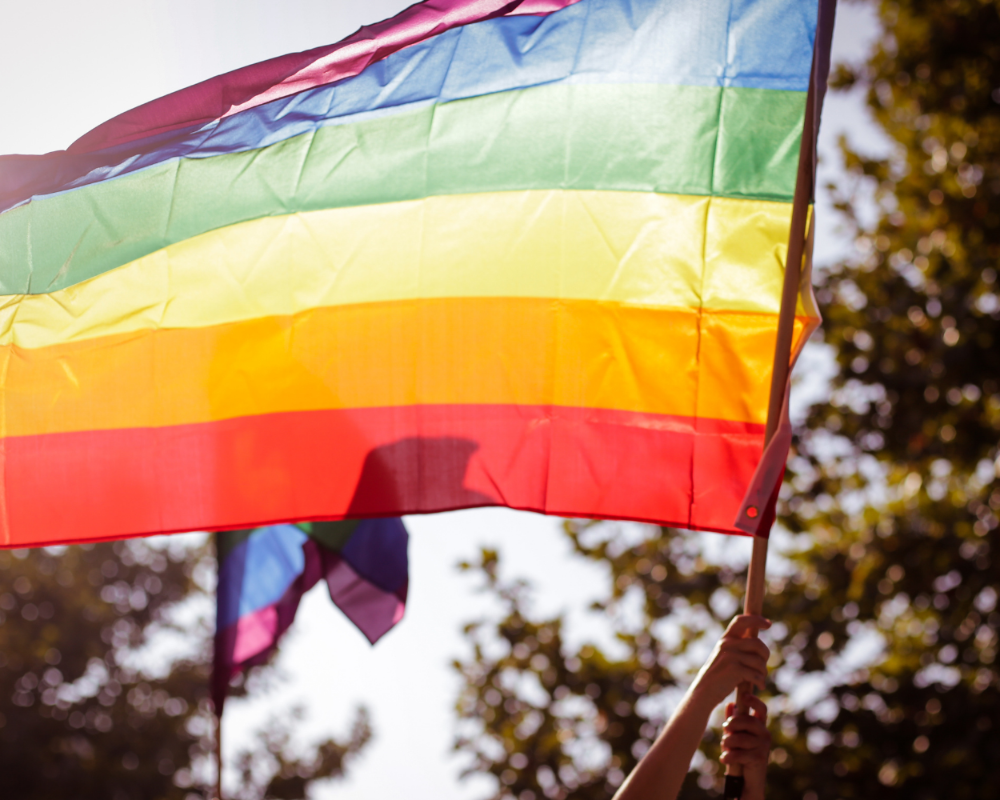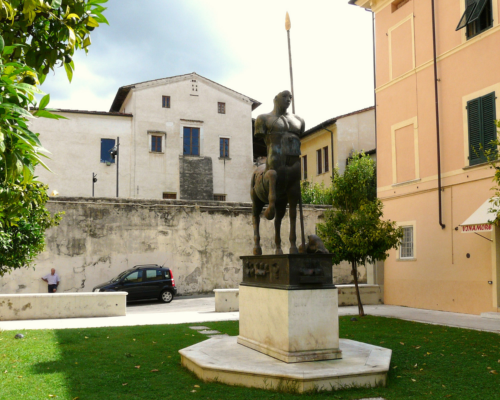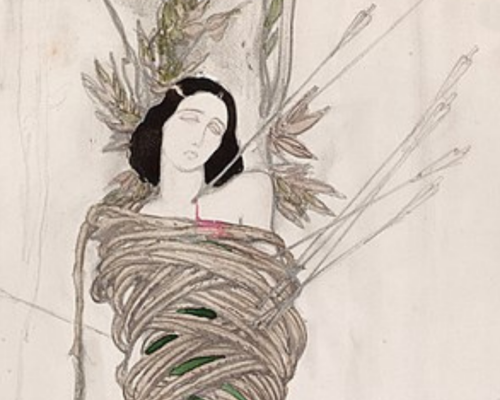


An itinerary of a thousand colors from Pietrasanta to Torre del Lago
Versilia certainly doesn't need much of an introduction. The beautiful stretch of Tuscany goes from Forte dei Marmi to Torre del Lago and is a very popular and well-known area.
Art and entertainment have always been part of the lifestyle here. These are combined with the locals' hospitable nature. This mix was probably the main reason that made this part of Tuscany particularly loved by visitors and has had a strong impact in identifying Versilia as a destination for LGBTQ + tourism in recent decades.
In this article, we lead you to discover the area through an itinerary to be covered by car or motorbike. We will leave from Pietrasanta and, passing through Viareggio, we will arrive at Torre del Lago Puccini.
Let's start from Pietrasanta, where we are particularly interested in the bond it has established with its most illustrious citizens. The works of Fernando Botero, Giò Pomodoro, Joan Mirò and Pietro Cascella, among many others, have turned the city into an open-air museum.
It's impossible to ignor Igor Mitoraj, a Polish artist who settled here in 1983. His sculptures are the result of a passion for the classical tradition and with particular attention to male busts, as in the case of the statue in Via Sant'Agostino 2, now known as Piazza del Centauro.
Let's start from Pietrasanta, where we are particularly interested in the bond it has established with its most illustrious citizens. The works of Fernando Botero, Giò Pomodoro, Joan Mirò and Pietro Cascella, among many others, have turned the city into an open-air museum.
It's impossible to ignor Igor Mitoraj, a Polish artist who settled here in 1983. His sculptures are the result of a passion for the classical tradition and with particular attention to male busts, as in the case of the statue in Via Sant'Agostino 2, now known as Piazza del Centauro.
Let's continue on to Marina di Pietrasanta and head towards the Versiliana Park. The park covers over 80 hectares and houses a villa in which Gabriele D'Annunzio stayed in 1906, describing it as "the most beautiful place in the universe".
D'Annunzio, a symbol of Italian decadence, was a very controversial figure. In 1911 Le martyre de Saint Sébastien led to him being accused of blasphemy. The reason was that the work recounting the martyrdom of St. Sebastian associates sacred and profane elements. Not only that, the role of Saint Sebastian was entrusted to a woman, a Russian dancer of Jewish origins called Ida Rubinštejn who was androgynous and openly bisexual, representing everything that was not usually accepted at that time.
However, D'Annunzio's work had a very important outcome for the LGBTQ + community. It determined Saint Sebastian as a gay icon. In fact, the work not only tells the story of the beautiful Sebastian, the emperor's favorite soldier, but above all about his death, described in the work as occuring amid passionate declarations of love for his beauty. From that moment on, LGBTQ + art and the figure of the saint were closely linked and re-proposed by many other artists.
Let's continue on to Marina di Pietrasanta and head towards the Versiliana Park. The park covers over 80 hectares and houses a villa in which Gabriele D'Annunzio stayed in 1906, describing it as "the most beautiful place in the universe".
D'Annunzio, a symbol of Italian decadence, was a very controversial figure. In 1911 Le martyre de Saint Sébastien led to him being accused of blasphemy. The reason was that the work recounting the martyrdom of St. Sebastian associates sacred and profane elements. Not only that, the role of Saint Sebastian was entrusted to a woman, a Russian dancer of Jewish origins called Ida Rubinštejn who was androgynous and openly bisexual, representing everything that was not usually accepted at that time.
However, D'Annunzio's work had a very important outcome for the LGBTQ + community. It determined Saint Sebastian as a gay icon. In fact, the work not only tells the story of the beautiful Sebastian, the emperor's favorite soldier, but above all about his death, described in the work as occuring amid passionate declarations of love for his beauty. From that moment on, LGBTQ + art and the figure of the saint were closely linked and re-proposed by many other artists.
Let's get back on the road from Marina di Pietrasanta to reach Viareggio. The important city of Versilia is definitely worth a visit with many things to offer.
However, Viareggio is above all known for Carnival, so don't miss the Citadel and the Carnival Museum in this itinerary, an excellent way to get to know the event in its entirety and the importance it has had over the centuries for the LGBTQ + community.
Today, the Carnival tradition is carried on thanks to the work of the master craftsmen of Viareggio who create works of art with papier-mâché, plaster and clay. The themes vary every year with giant allegorical floats connected to the world around us, designed to make us reflect.
In past year, issues relating to the LGBTQ + community have been the center of the "Mardi Gras" event in Torre del Lago. In spite of the fact that that event no longer takes place today, those themes have been taken up in the classic Carnival.
In February 2020, love without distinction of sex, orientation and gender was celebrated unequivocally with the chariot "Neither of Eve nor of Adam" made by the Breschi brothers. The allegorical float represented a beautiful "homage to love in all its expressions and a warning against homophobia".
Let's get back on the road from Marina di Pietrasanta to reach Viareggio. The important city of Versilia is definitely worth a visit with many things to offer.
However, Viareggio is above all known for Carnival, so don't miss the Citadel and the Carnival Museum in this itinerary, an excellent way to get to know the event in its entirety and the importance it has had over the centuries for the LGBTQ + community.
Today, the Carnival tradition is carried on thanks to the work of the master craftsmen of Viareggio who create works of art with papier-mâché, plaster and clay. The themes vary every year with giant allegorical floats connected to the world around us, designed to make us reflect.
In past year, issues relating to the LGBTQ + community have been the center of the "Mardi Gras" event in Torre del Lago. In spite of the fact that that event no longer takes place today, those themes have been taken up in the classic Carnival.
In February 2020, love without distinction of sex, orientation and gender was celebrated unequivocally with the chariot "Neither of Eve nor of Adam" made by the Breschi brothers. The allegorical float represented a beautiful "homage to love in all its expressions and a warning against homophobia".
From Viareggio, let's continue on to Torre del Lago Puccini, the undisputed queen of Tuscan LGBTQ + nightlife.
Giacomo Puccini lived in this hamlet of the municipality of Viareggio for many years and it was here that the great composer found inspiration for many of his works, such as Tosca and Madama Butterfly. In Torre del Lago, there's no shortage of things to see: from Villa Puccini, the beautiful liberty villas in the center, to Lake Massaciuccoli where you can take a boat trip to discover the natural wonders of this WWF protected area.
However, if you prefer a little relaxation, La Lecciona beach in Marina di Torre del Lago Puccini is the place for you. The soft natural dunes and the pine forest frame one of the most popular gay friendly beaches in Italy.
The best time to experience Torre del Lago is summer, when the many gay-friendly bars along Viale Europa are filled with people ready to party with respect for everyone.
From Viareggio, let's continue on to Torre del Lago Puccini, the undisputed queen of Tuscan LGBTQ + nightlife.
Giacomo Puccini lived in this hamlet of the municipality of Viareggio for many years and it was here that the great composer found inspiration for many of his works, such as Tosca and Madama Butterfly. In Torre del Lago, there's no shortage of things to see: from Villa Puccini, the beautiful liberty villas in the center, to Lake Massaciuccoli where you can take a boat trip to discover the natural wonders of this WWF protected area.
However, if you prefer a little relaxation, La Lecciona beach in Marina di Torre del Lago Puccini is the place for you. The soft natural dunes and the pine forest frame one of the most popular gay friendly beaches in Italy.
The best time to experience Torre del Lago is summer, when the many gay-friendly bars along Viale Europa are filled with people ready to party with respect for everyone.